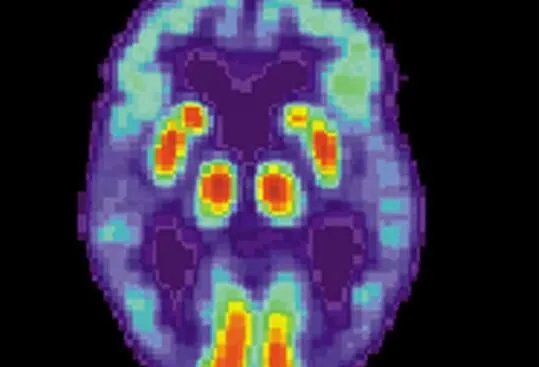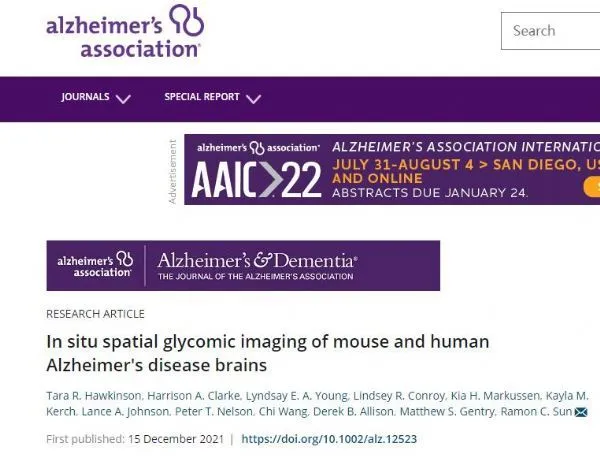Scientists have mapped out glycosylation patterns related to the onset of Alzheimer’s disease in humans
- Engineered Soybeans with Pig Protein: A Promising Alternative or Pandora’s Dish?
- Severe Fever with Thrombocytopenia Syndrome (SFTS): A Tick-Borne Threat with High Mortality
- Why Isolating Bananas Extends Their Shelf Life?
- This common vitamin benefits the brain and prevents cognitive decline
- New report reveals Nestlé adding sugar to infant formula sold in poor countries
- Did Cloud Seeding Unleash a Deluge in Dubai?
Scientists have mapped out glycosylation patterns related to the onset of Alzheimer’s disease in humans
- Red Yeast Rice Scare Grips Japan: Over 114 Hospitalized and 5 Deaths
- Long COVID Brain Fog: Blood-Brain Barrier Damage and Persistent Inflammation
- FDA has mandated a top-level black box warning for all marketed CAR-T therapies
- Can people with high blood pressure eat peanuts?
- What is the difference between dopamine and dobutamine?
- How long can the patient live after heart stent surgery?
Scientists have mapped out glycosylation patterns related to the onset of Alzheimer’s disease in humans.
N-chain protein glycosylation in the brain is an aspect that researchers have not fully studied in the process of glucose utilization. It affects a variety of cellular processes, including resting membrane potential, axon activation, and synaptic vesicle transport. .
Recently, in a research report titled “situ spatial glycomic imaging of mouse and human Alzheimer’s disease brains” published in the international journal Alzheimer’s & DementiaIn, scientists from the University of Kentucky and other institutions used a new method to investigate the deceased Of healthy people and patients with Alzheimer’s disease, and mapped out changes in sugar chains attached to brain proteins in their bodies.

The results of a PET scan of the brain of a patient with Alzheimer’s disease.
Image source: public domain
So far, researchers have not had an effective method to treat Alzheimer’s disease, so current clinical patients urgently need new methods to prevent the progression of this destructive neurological disease.
In the article, the researchers developed a new imaging method that can identify the special pattern of sugar molecules adsorbed to the internal proteins of the tissue.
The sugar molecule adsorption mode that the researchers studied is N-glycosylation, and they applied this This new method analyzes the “sugar codes” in the brains of two mice with Alzheimer’s disease and humans who died of dementia.
The mouse model studied by the researchers represents two different diseases common in Alzheimer’s disease patients. In one of the models, the mouse brain accumulates Aβ (amyloid β) protein; In the other model, mice accumulate tau protein in their brains; although the two have different pathological mechanisms, all mouse models show N- in the frontal cortex and hippocampus of the brain.
Increase in glycosylation level. In addition, the researchers also analyzed 3 age-matched individuals and 3 Aβ Alzheimer’s disease patients.
Just like the mouse brain, in the brains of Alzheimer’s disease patients, the glycosylation in the frontal cortex is However, contrary to the results observed in mice, the level of N-glycosylation in the hippocampus of patients with Alzheimer’s disease has decreased.
These findings determined the regional differences between the frontal cortex and hippocampus between human Alzheimer’s disease patients and matched control individuals.
An increase in the level of N-glycosylation was observed in the cortex, while a decrease in the level of N-glycosylation was observed in the hippocampus area;
in addition, this study also emphasizes the Alzheimer’s disease mouse model and human patients There is a fundamental difference between N-chain protein glycosylation patterns in the hippocampus region.

Image source: https://alz-journals.onlinelibrary.wiley.com/doi/10.1002/alz.12523
Researcher Sun said that the research in this article may indicate the research direction, new therapeutic targets, and biomarker evaluation for future therapy development and Alzheimer’s disease diagnosis for scientists.
Understanding the importance of N-glycosylation patterns and the regulation of biochemical processes in the brain is the subject of a review published by researchers in Trends in Endocrinology & Metabolism.
The biosynthesis of N-chain protein sugar chains is a paradox of glucose metabolism. A branch that has not been fully studied; in cells, glucose can be used to generate energy or build complex sugar chains, and can modify proteins or lipids; these processes also compete for the very limited source of glucose in the cell.
Researcher Tara Hawkinson said that in the central nervous system, N-chain protein glycosylation is very important for both neurons and glial cells.
This process controls multiple aspects of key proteins involved in neuronal activity. Glycosylation will drive neuronal dysfunction and death.
Therefore, altered protein glycosylation may cause a variety of neurological overgrowth, from diseases related to neuron loss, such as Alzheimer’s disease and Parkinson’s disease, to diseases related to neuronal connection defects, such as mental illness. Schizophrenia and developmental neurological disorders, etc.
In this article, the new method developed by the researchers can be used to evaluate the spatial distribution of the sugar codes of N-glycosylation patterns in the brain.
This may allow researchers to ask many key questions, such as how these patterns are in pathological conditions.
Be changed etc. Researcher Gentry said that with these methodological advances, we can begin to answer questions about how brain cells coordinate glucose metabolism to balance the body’s energy requirements and glycosylation requirements, and how changes in the sugar code can promote neurological diseases. Occurs, and researchers can begin to develop new methods to solve the above problems.
In summary, the results of this article show that the malfunction of N-chain polysaccharides may be a key reason and basis behind the occurrence of Alzheimer’s disease.
Reference:
Tara R. Hawkinson, Harrison A. Clarke, Lyndsay E. A. Young, et al. In situ spatial glycomic imaging of mouse and human Alzheimer’s disease brains, Alzheimer’s & Dementia (2021). DOI:10.1002/alz.12523
Scientists have mapped out glycosylation patterns related to the onset of Alzheimer’s disease in humans
(source:internet, reference only)
Disclaimer of medicaltrend.org
Important Note: The information provided is for informational purposes only and should not be considered as medical advice.



